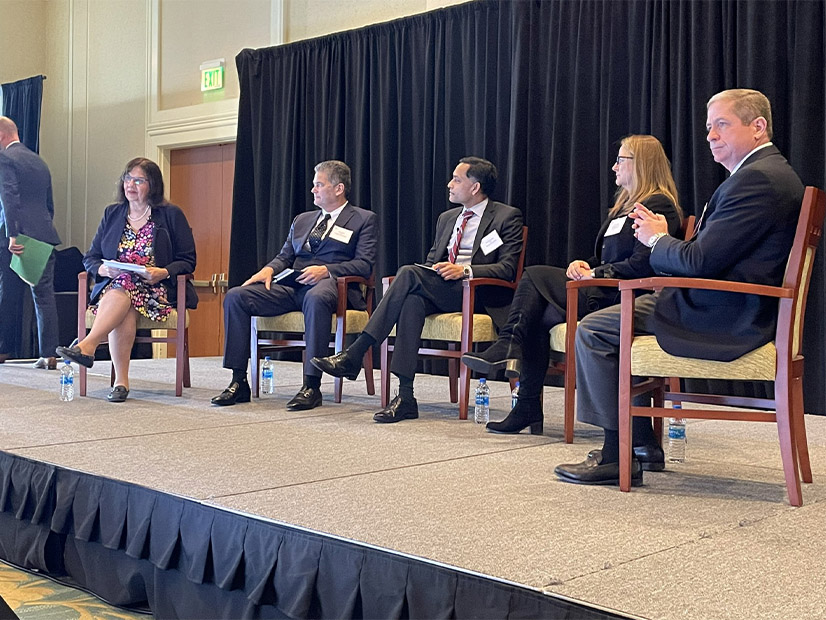IPPs See Danger in Swift Move from Gas and Coal
CEOs Give Stark Outlook for New England Winter

ISO-NE Board Chair Cheryl LaFleur (left) moderates a session during the New England Energy Summit in Boston with (second from left to right) Competitive Power Ventures CEO Gary Lambert; Starwood Energy Group CEO Himanshu Saxena; Sarah Wright, Hull Street Energy; and Vistra CEO Curt Morgan. | New England Power Generators Association
Dec 14, 2021
|
Independent power producers warned that policymakers are risking reliability by attempting to transition too quickly from gas and coal to renewables.

